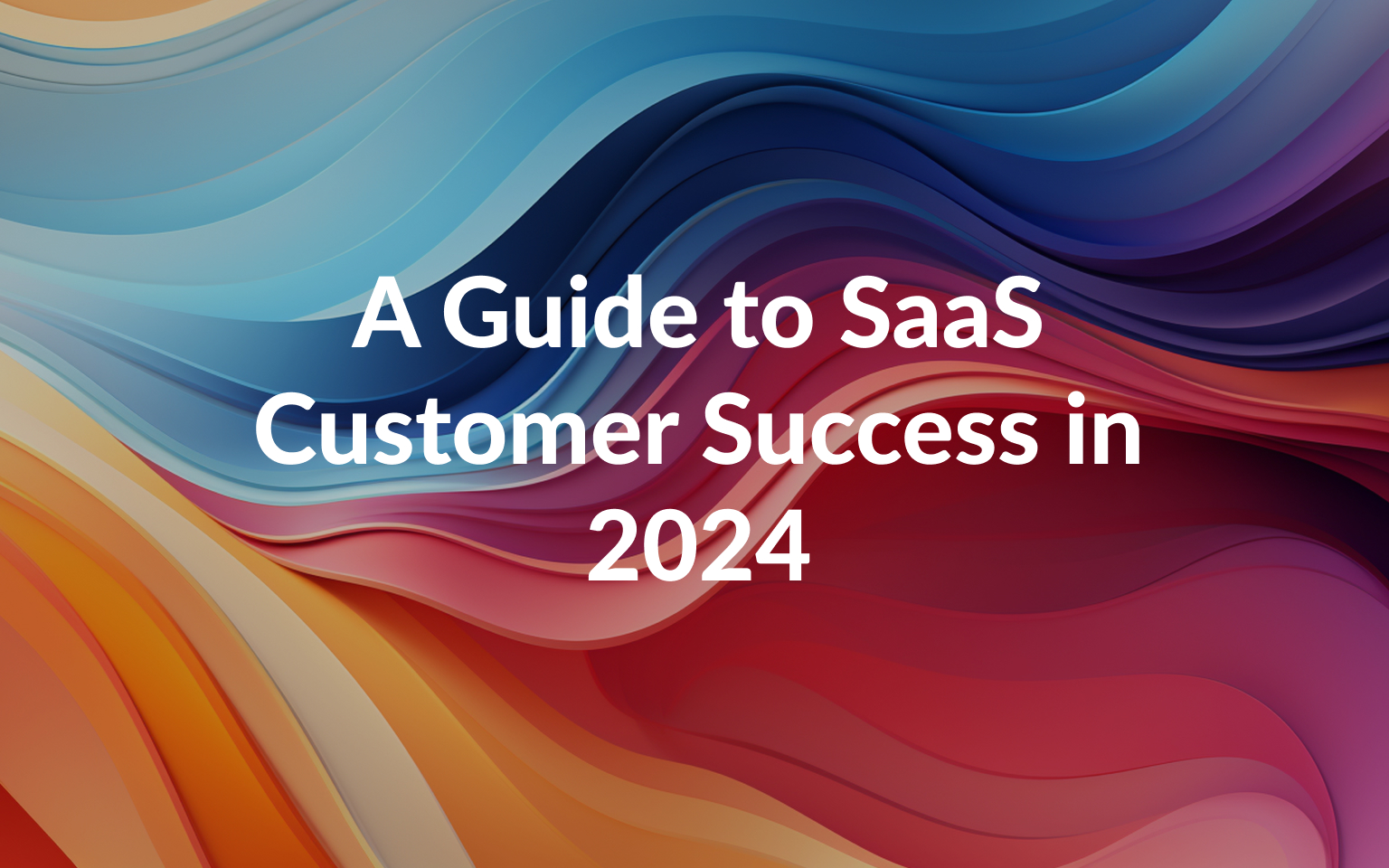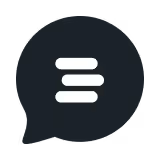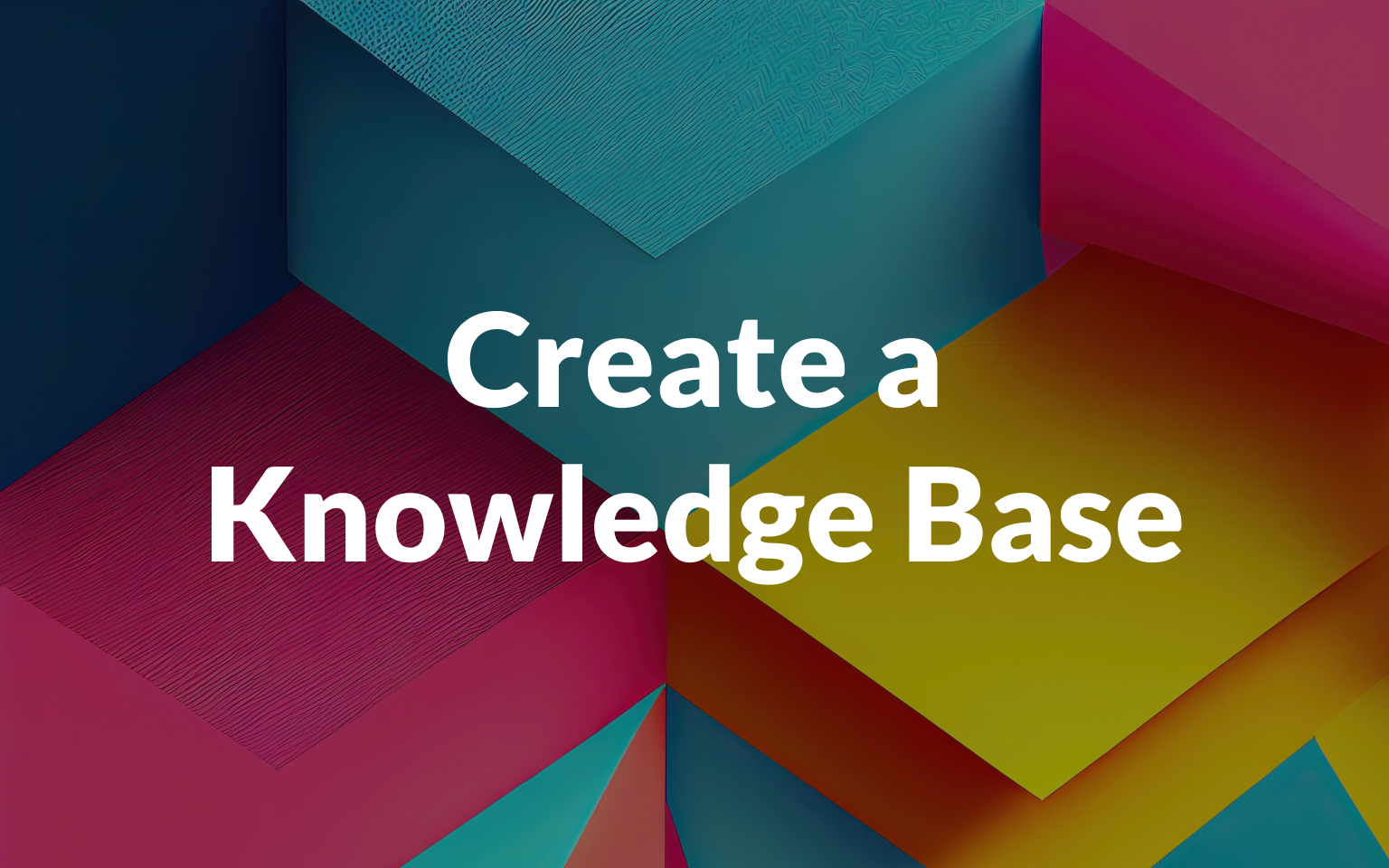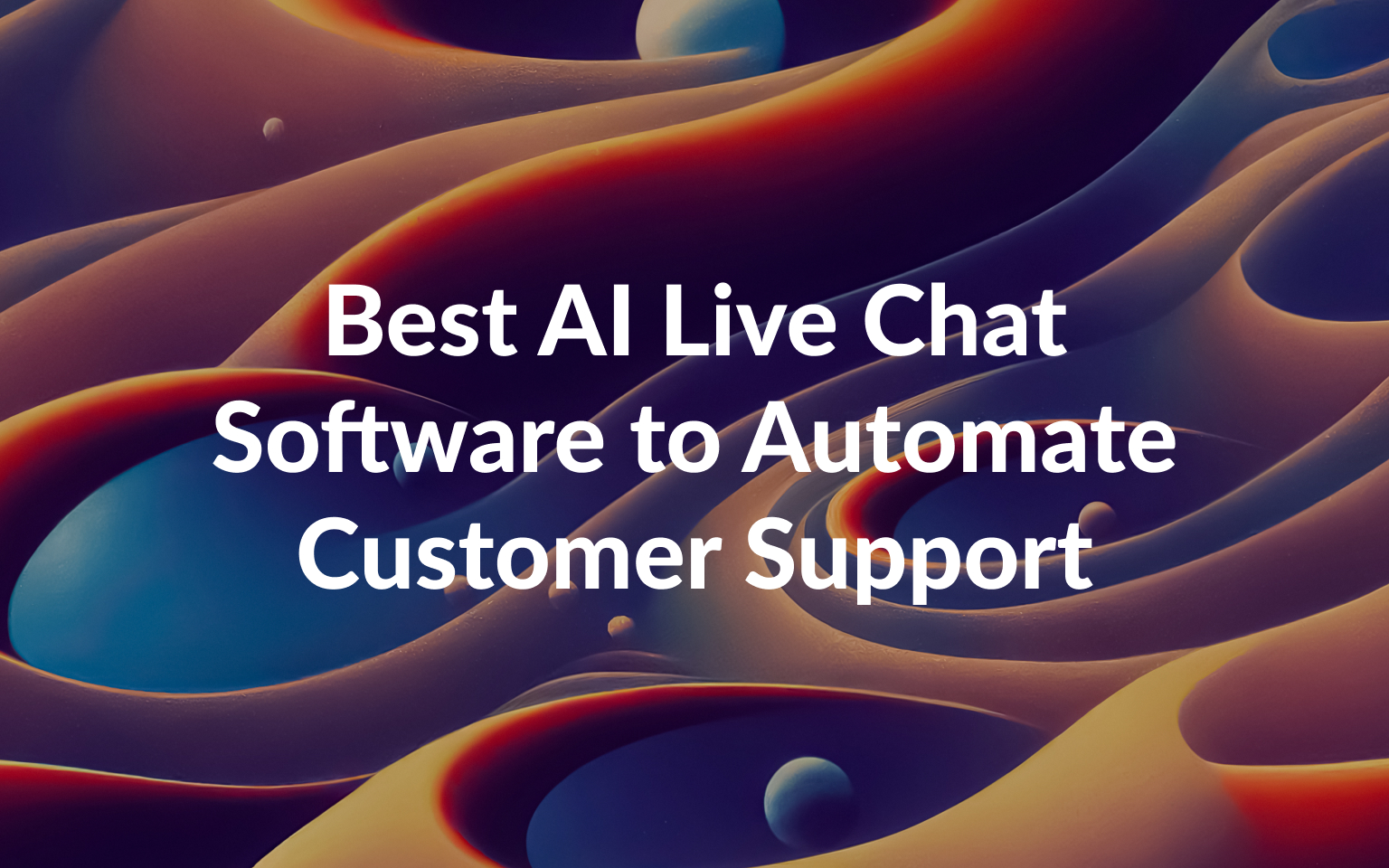

SaaS Customer Success: Complete Step-by-Step Guide (2025)

When it comes to the SaaS industry, sales aren’t the final stage in the funnel.
They’re only the beginning.
You also need to keep your clients consistently engaged in the product, offer ongoing support, deliver exceptional user education and analyze engagement metrics.
A tall order, right?
But a dedicated SaaS customer success plan can help with all of that and more.
And to anticipate any questions you may have—No, you don’t need to build it manually. There are multiple tools available. Yes, it’s easy enough to conceptualize and create. And, finally, no, it’s not enough to just have customer support.
There, all done. Now, let’s tell you all about customer success in SaaS.
Why is customer success in SaaS important?
On average, SaaS companies spend 6% of their revenue on customer success operations.
Why? The answer is in the name itself.
SaaS, as in service.
And services don’t work like one-time purchases. They focus on delivering consistent positive customer experiences, exceptional product value and, most importantly, a recurring source of revenue.
The only way to do all three is to ensure your clients meet their desired outcomes when using your product. That’s why customer success matters for SaaS providers.
But it doesn’t stop there. A well-executed customer success strategy can:
- Drive product adoption: Customer success involves several elements, including proactive user education on app features, streamlining onboarding processes, etc. This helps highlight core product value to clients and, thereby, drives adoption rates.
- Minimize customer churn: A proactive customer success plan engages, educates and even entertains valued clients. This keeps them attached to your brand, loyal to your product and, more importantly, prevents churn rates from going too high.
- Maximize customer lifetime value (LTV): In the SaaS industry, a satisfied customer means a consistent, recurring source of revenue. Over time, that balances out their acquisition costs and provides you with long-term monetary value.
- Guide platform improvements: Use analytics tools to consistently collect user feedback on app performance, accessibility and feature utility. Then, apply these insights to shape future updates, improvements, bug fixes, etc.
- Boost referral revenue: The more satisfied users are with your software, the more likely they are to recommend it to others. That directly translates to increased revenue and enhanced brand/product recognition.
Understand this: customer success isn’t just about making your clients happy nor is it some obscure business objective you force yourself to focus on. In SaaS, and many other industries, it’s the defining element to your brand’s and product’s market relevance.
A 7-step guide to SaaS customer success
The best guides break everything down into actionable steps. We’ve decided to do the same. More importantly, we’ve organized the tips based on the order you need to execute them to make them easy to follow.
Let’s begin, shall we?
1. Identify why & how customers use your product
Nobody knows your product better than you. You’ve probably even figured out 20+ practical use cases for a niche feature in your platform.
That’s partly the issue. You know how to achieve success with your tool. Your customers don’t. And when you don’t bring those two elements together, you end up with a misaligned product-customer fit.
The simplest way to avoid this is to create an airtight research process and understand:
- Why customers adopted your product (the in-built tool that caught their attention)
- How they apply it to their businesses (usage of core/peripheral features)
You can use this survey template ready to use to gather information about why and what’s the main benefit they receive by using your product.
To gain insight into both those aspects, you can:
- Analyze industry literature for the most common uses of your product category
- Conduct periodic user interviews to gather qualitative data on app usage
- Build scored surveys to learn how customers view specific platform features
- Use feedback reports to assess client satisfaction regarding software performance
- Integrate self-reporting into the app for better insight into overlooked user queries
Aside from analyzing industry literature and incorporating self-reporting options, you’d want to do all of the above right after the onboarding process. This will keep you familiar with customer expectations from the get-go.
Get in-app Surveys
Collect valuable insights effortlessly with Customerly’s surveys. Understand customer needs, boost satisfaction, and improve retention today.2. Simplify the sign-up & onboarding experience
Here’s a simple truth: SaaS customer success is directly tied to the sign-up and onboarding experience you deliver.
A study found that 21% of SaaS products moved to a frictionless sign-up and onboarding process. In short, these platforms only need your name and email address before giving you complete control over their tools.
Why’d they do that? Because keeping access requirements simple makes it easier for customers to engage with and gain value from your product.
The good news is that you can do it too. You start by:
- Allowing Single-Sign-On (SSO) and social logins
- Splitting long sign-up forms into logical segments to improve completion rates
- Relying on user segmentation to personalize guidance actions/material
- Categorizing in-app training modules based on feature priority
- Adding a progress checklist to notify users of the remaining steps
- Using contextual tooltips & short interactive guides/videos for product walkthroughs such the following one
To understand this better, look at Productboard’s SSO-enabled sign-up page.
It has a single activation/verification step, with quick-access links to popular email clients. You can also add a social media sign-up option for users to join with their social accounts, like LinkedIn or Facebook.
On account activation, the site immediately directs users to the in-app tour which includes three neatly segmented categories.
3. Analyze the ‘right’ engagement metrics
If you want product-led growth and consistent user engagement, you must understand how customers spend their time on your platform.
For instance, someone logs multiple hours in your app dashboard daily. Does that mean they’re benefitting from all that it offers or are they just spending that time trying to figure out how it works?
So, instead of prioritizing generic data points, it’s best if you:
- Compare session length & usage frequency over time to assess product accessibility
- Evaluate key feature usage to identify issues with your product walkthroughs
- Count allocated projects for the software’s core tools to monitor client productivity
- Analyze time spent on peripheral platform integrations to guide app improvements
- Track your customers’ onboarding progression to accelerate time to activate
Finally, avoid focusing on vanity metrics,such as the number of account logins or cumulative time spent on the platform.
While they seem helpful, these ‘insights’ do next to nothing for SaaS customer success efforts. In most cases, they’ll end up skewing results for internal benchmarks such as user stickiness.
4. Create an impactful self-service support system
You don’t have to do all the legwork to achieve customer success in SaaS. Sometimes, your users will do it for you.
A lot of what your customer success team handles can be done through self-service content and AI Customer support. The best bit?
You have plenty of options to choose from when creating your self-service system.
That said, it’s best to keep these tips in mind when deploying such content:
- Consistently update your knowledge bases to keep it relevant to app developments
- Use email automation & AI-suggested learning paths to resolve similar user queries
- Set up topical categorization of support articles/videos for customers’ ease of use
- Establish a peer-led community to share actionable and contextual tips on app usage
- Use tools like Floik to build interactive app walkthroughs for your knowledge base
- List common queries/solutions in your help center to accelerate resolution times
It also helps to create an omnichannel self-service system. That promotes customer accessibility across multiple devices and platforms.
Customerly offers a comprehensive set of tools for SaaS customer success, designed to enhance customer service, satisfaction, and marketing automation. Their platform features AI Chatbots and an AI-powered HelpDesk solution.
They provide marketing automation tools to simplify complex customer journeys and deliver personalized experiences that convert and retain customers.
Want to boost satisfaction and cut costs? Activate Aura and watch your AI chatbot autonomously handle more than 50% of support inquiries with ease. Aura also transcends language barriers and offers precise support to your global customers instantly.
What I like the most is that with every knowledge base update or new canned response, Aura AI learns and swiftly adapts. Ensuring immediate, accurate assistance to your clients.
Scale Smarter with Aura AI Chatbots
Running a SaaS? Aura AI makes life easier by handling 50% of support tickets. Focus on growth—we’ve got your back.🚨 We’re already in the age of AI, and your competitors are learning how to use it to scale customer success. If you haven’t yet, now’s the time to explore how AI fits into your own strategy.
5. Offer proactive customer education
The best Saas customer success teams are always proactive in their efforts And you know what else requires such an approach? Customer education.
Don’t mistake this for self-service content. Both utilize similar material (recorded webinars, in-app guides, etc.) but the goal differs for each instance.
Self-service reduces the pressure on support teams and automates the resolution of client issues/queries. Meanwhile, user education drives business-critical outcomes, such as quicker onboarding, enhanced LTV, minimal churn, etc.
Here’s a quick summary of some of the benefits of a proactive customer education model:
- Accelerates onboarding processes with in-depth insights into app features
- Drive product adoption by highlighting the value of core tools in operational tasks
- Boosts customer satisfaction and retention through consistent platform guidance
- Offers multiple upselling/cross-selling opportunities by introducing new features
- Reduces support costs & allows business expansion through redirected resources
Just remember, a proactive user education model always involves collaboration across teams and support tools. For instance, customer success executives may have to rely on social media analytics or CRM leads to figure out the most common user complaints.
6. Offer pricing flexibility & additional benefits
Research indicates that 50% of SaaS providers develop their pricing strategy based on user profiles. Still, we won’t presume to tell you how much your product should cost. That’s for you to decide.
Instead, we suggest offering incentives to your customers while highlighting product value. One way to do this is to use video testimonials to review common app use cases for all your clients.
You are essentially saying—‘Hey, we know our product is critical to your operations but we value you and want to offer something extra.’ See how nice that sounds?
Here are a few tips to introduce pricing flexibility in your proposals without making significant cuts to your bottom line:
- Provide ancillary benefits for long-term commitments (early access to beta features)
- Offer special discounts to draw in a new customer base (students, freelancers, etc.)
- Test separate pricing plans on different user categories to gauge a median
- Provide limited/free trials of additional tools to increase perceived packaged value
- Use competitor analysis to identify the minimal cost reductions you have to make
The best example here is Adobe. For all its seemingly random discounts, Adobe knows the value it provides. And, with so few competitive alternatives, it makes up for its offers on revenue volume alone.
7. Conduct dedicated quarterly reviews
None of the above steps will help you achieve SaaS customer success if you don’t have a dedicated review process in place. And all of the information in your review setup will come from customer-provided feedback.
Why? Because your clients know everything about your product’s performance. They also have valuable insight into issues related to your pricing model, offered features and, more importantly, potential app improvements.
Now, if you want to do this right, here are a few tips you can follow:
- Create a separate repository for unique problems (bugs, client complaints, etc.)
- Identify the most urgent issues related to your platform’s core functionality/tools
- Run regular surveys to gauge user opinion on beta features, pricing plans, etc.
- Assess your team’s performance in delivering a positive customer experience
- Analyze how your suggested/deployed actions work across different user groups
- Evaluate the correlation between specific KPIs and metrics (more on this in a bit)
You don’t have to do all of this manually. Automated customer feedback tools already exist and can help streamline this process.
8 key SaaS customer success metrics to track
An actionable guide is only helpful if it offers insight into key aspects to monitor the overall success of your strategy. To help in this regard, we’ve identified eight critical metrics and the elements they shed light on.
Here they are:
- Retention rate: Helps identify problems related to product-market fit & missing core app features
- Customer health score: Enables you to assess prime candidates for cross-selling/upselling opportunities & predict churn rates.
- Time to activate: Reveals how refined your onboarding process is, the complexity of your product walkthroughs/in-app tours & potential improvements you need to make.
- Renewal rate: Familiarizes you with customer expectations, their satisfaction levels & overall product performance.
- Customer engagement score: Offers insight into platform usage, future subscription upgrades & app accessibility.
- Average revenue per user: Allows you to prioritize better acquisition channels, enhance user segmentation efforts and check your market performance.
- Monthly recurring revenue: Allows you to average separate pricing plans/billing periods into a consistent, single value to track over time.
- Net promoter score: Provides tangible data on customer loyalty by calculating NPS and the probability of generating revenue from referrals.
It’s also important to keep an eye on your LTV. That’ll tell you everything you need to know about the overall performance of your SaaS customer success plan. A good ratio here is generally around 3:1 (3x the revenue you spent on client acquisition).
Build your SaaS customer success strategy today!
Like most business-critical domains, customer success in SaaS works best when multiple teams collaborate to achieve the desired outcome.
So, feel free to include your support executives in the planning process. Train them on the most effective resolution strategies. Go and have a meeting with your sales team to identify upselling opportunities.
You can even ask your CRM leads to include subtle nods to upcoming product features.
After all, customer success encompasses everything related to your clients. There’s no reason, your efforts shouldn’t as well.
Take Your Customer Success to the Next Level
Automate processes, engage smarter, and retain more customers with Customerly. Start your free 14-day trial now and see the differenceConclusion
And there you have it—a comprehensive guide to crafting an effective SaaS customer success strategy. With these steps, you’ll be well on your way to boosting customer satisfaction, reducing churn, and driving long-term growth.
But why stop at just reading about it? Take the next step and put these strategies into action with Customerly. Our platform offers a suite of tools designed to make your customer success efforts more efficient and impactful. From AI-powered chatbots to advanced marketing automation, Customerly has everything you need to keep your clients engaged and satisfied.
Ready to transform your customer success approach? Sign up for a free trial with Customerly today and see the difference it can make for your business. Don’t just manage customer success—master it.






